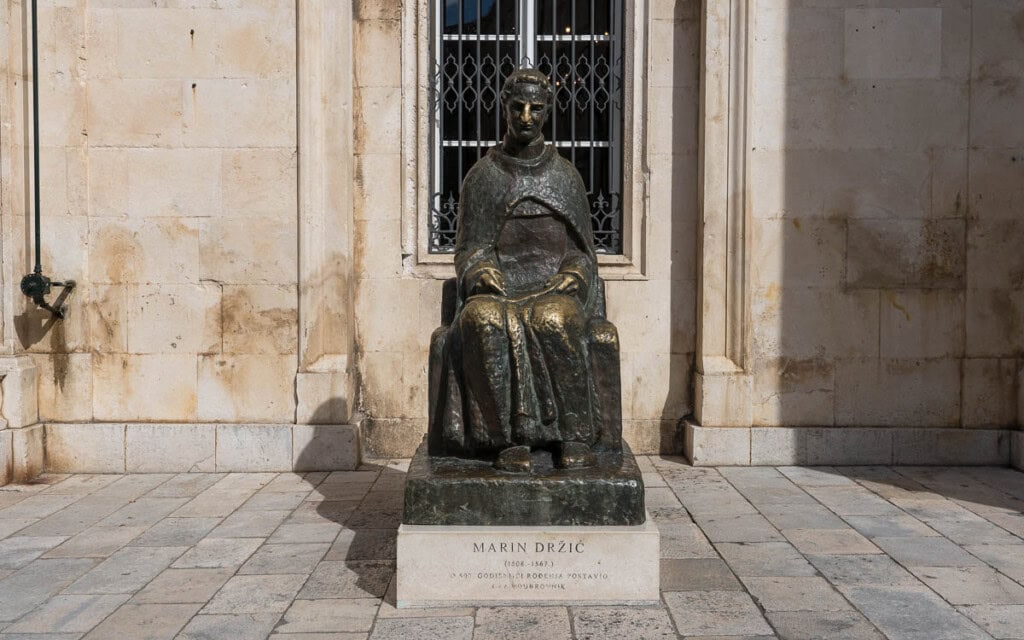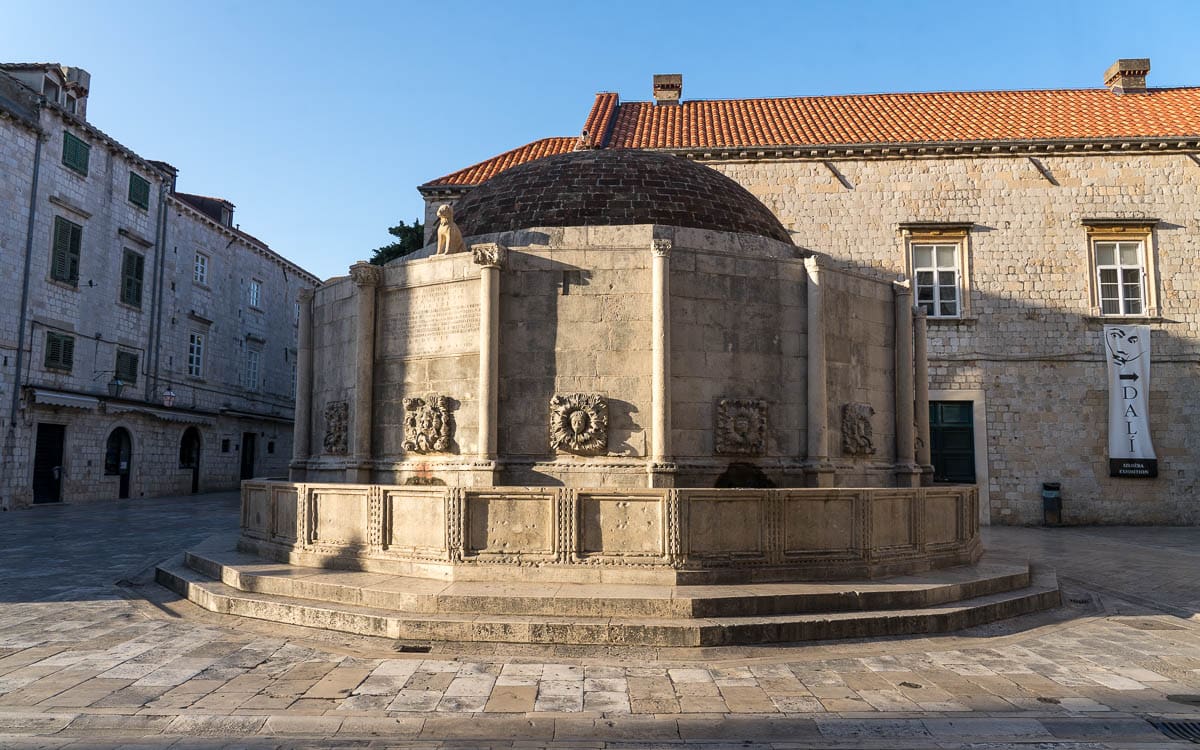
The Large Onofrio Fountain, on Stradun near Pile Gate, is a historic circular fountain and one of Dubrovnik’s most famous landmarks. For centuries, the ornate fountain has supplied water to the citizens of Dubrovnik and remains a testament to the city’s architectural and engineering skills.
Italian architect Onofrio della Cava designed and built the fountain between 1438 and 1440. He also created the Small Onofrio Fountain on the opposite side of Stradun.
The fountain was part of the city’s water supply system. In 1436, the government issued a rule to construct an aqueduct. The system used gravity to bring water from the Rijeka Dubrovačka in Šumet, 12 kilometers (7.4 miles) away, to the city. The aqueduct brought water directly to the city, culminating at the Large Onofrio Fountain.
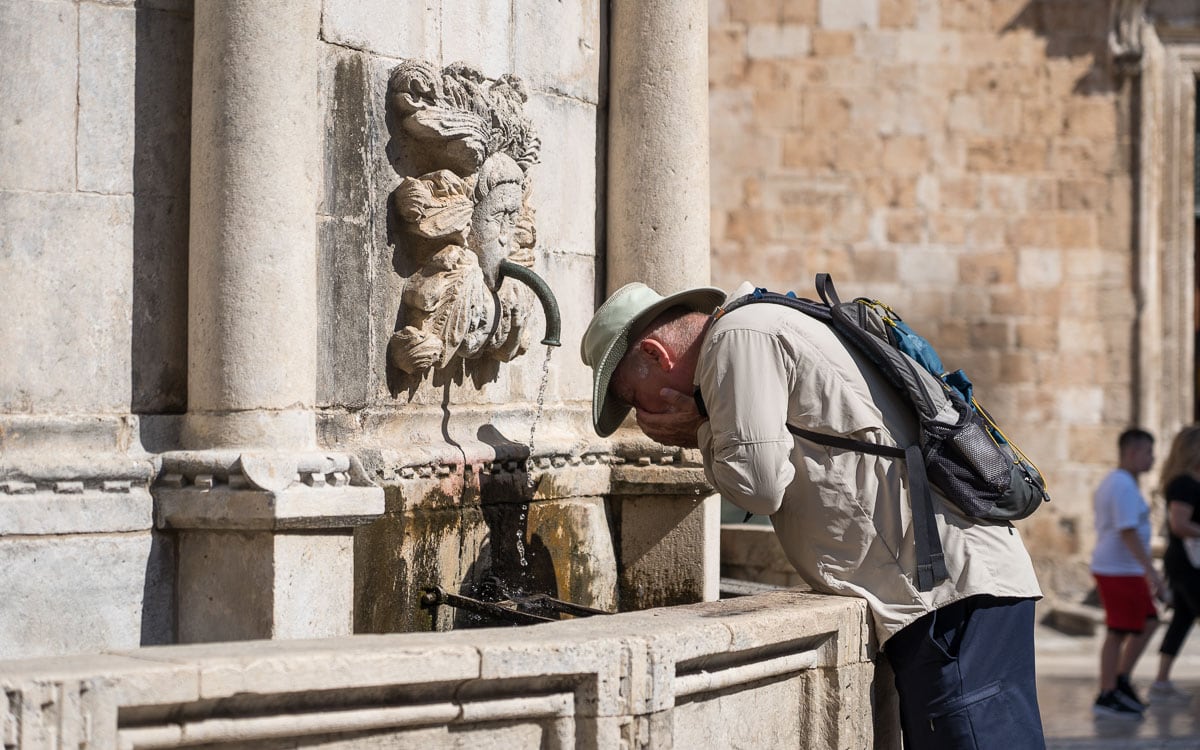
For nearly 600 years, locals used the fountain as their primary water source. At the end of the 19th century, the city installed a modern water supply system. Today, the fountain continues to supply clean drinking water to passersby.
Though built to supply water, the sixteen-sided fountain is also known for its artistic design, which features a large, circular basin and a central dome.
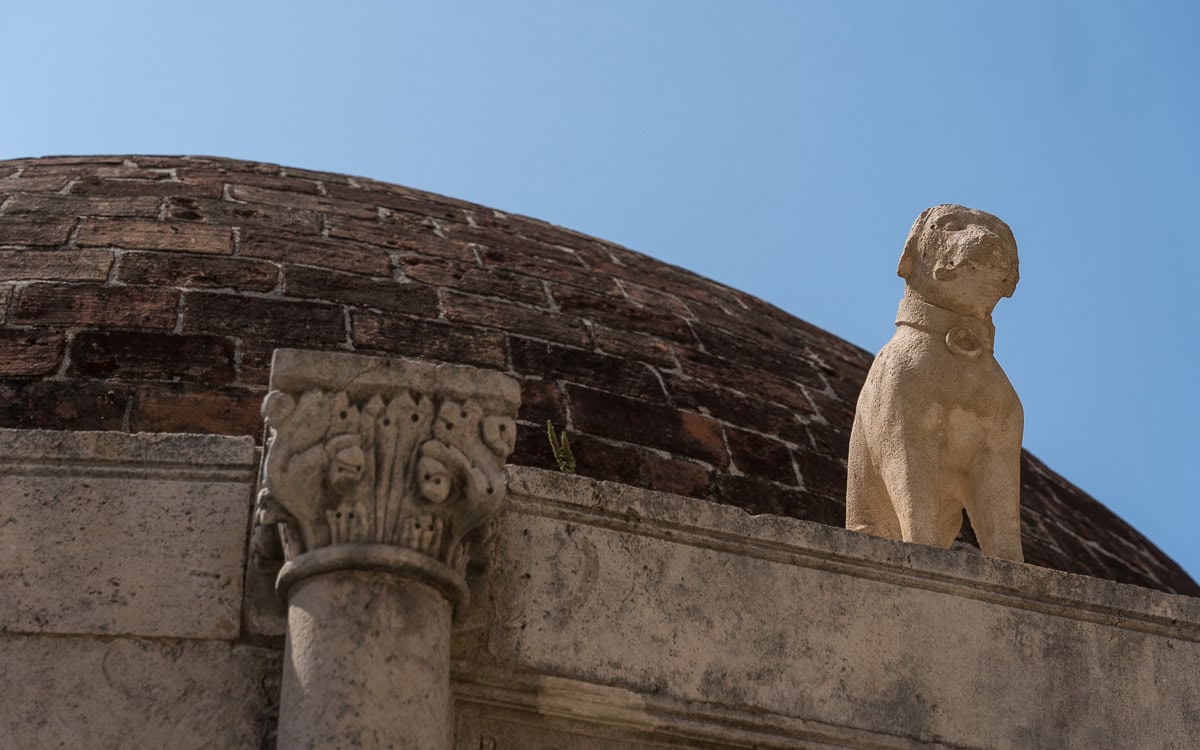
Initially, the fountain featured various statues, but all were lost or damaged over time, including during the 1667 Dubrovnik earthquake. In 2016, officials reinstalled a replica of a dog statue on the fountain.
Ornate maskeroni adorn the fountain’s sixteen sides. These unique stone-carved masked faces serve as water spouts, supplying fresh water.
Despite suffering damage during the earthquake, the fountain remains integral to Dubrovnik’s history and engineering prowess. While the fountain no longer serves as the primary water source, it maintains its historical function by providing locals and tourists with clean, cold, and refreshing water.
Large Onofrio Fountain Information
Hours
24 hours
Admission
Free
Map
Nearby Sights
Stradun
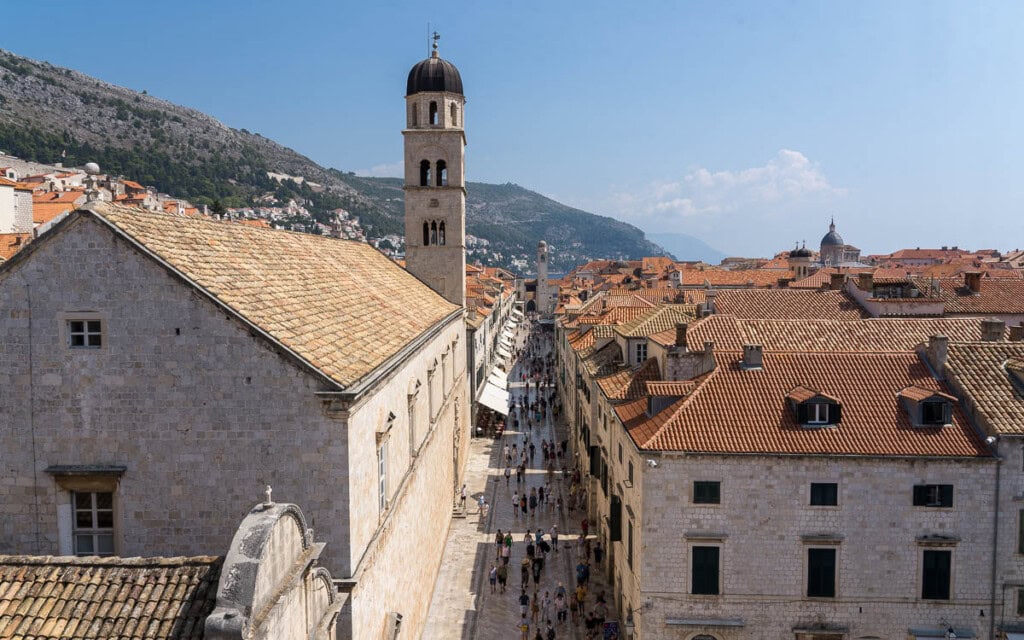
Stradun, officially Placa, is Dubrovnik's main street, stretching 300 meters from Pile Gate in the west to Luža Square in the east. Along the limestone-paved street, which cuts through the heart of Dubrovnik, are many historical sights, restaurants, bars, cafes, and shops. Along Stradun, you will find some of Dubrovnik's most important sites, including the Large Onofrio Fountain, Sponza Palace, the Church of Saint Blaise, and Dubrovnik Bell Tower.
Church of Saint Blaise
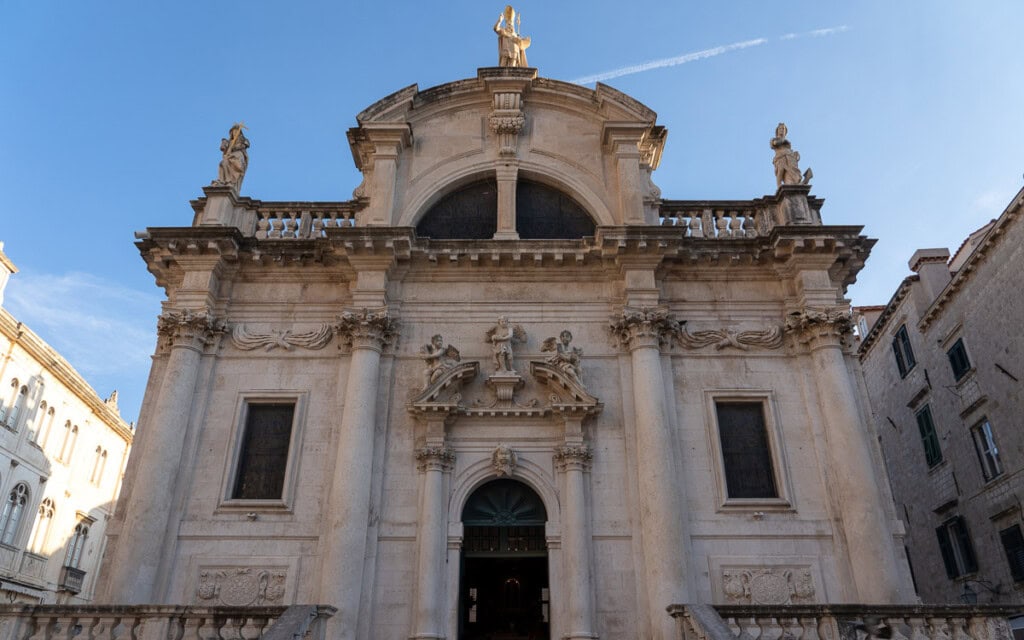
The Church of Saint Blaise, located on the eastern end of Stradun, is one of the most iconic and famous landmarks in Dubrovnik, Croatia. The church, dedicated to Saint Blaise, the patron saint of Dubrovnik, dates back to the early 18th century. A Romanesque church stood at this location from the 14th century until the middle of the 17th century.
Orlando's Column
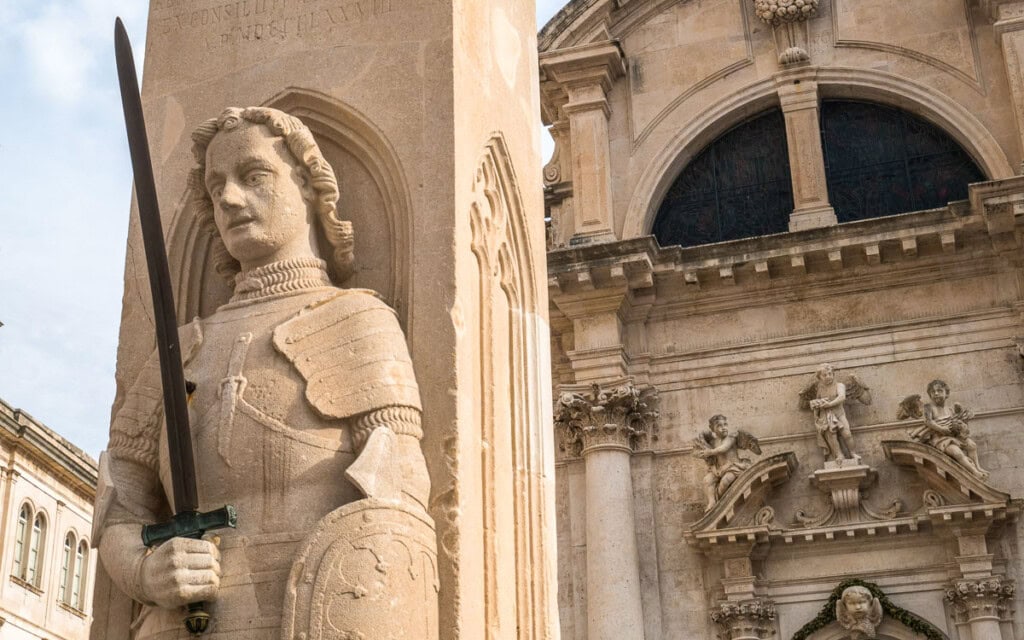
In the center of Luža Square, on the eastern end of Stradun, is Orlando's Column, a historic stone monument dating back to 1418. Carved into the statue is a heroic medieval knight who defended Dubrovnik from invaders. In 1418, Bonino di Jacopo, an Italian master sculptor from Milan, built the column with the help of local sculptor Antun Dubrovčanin.
Jesuit Stairs
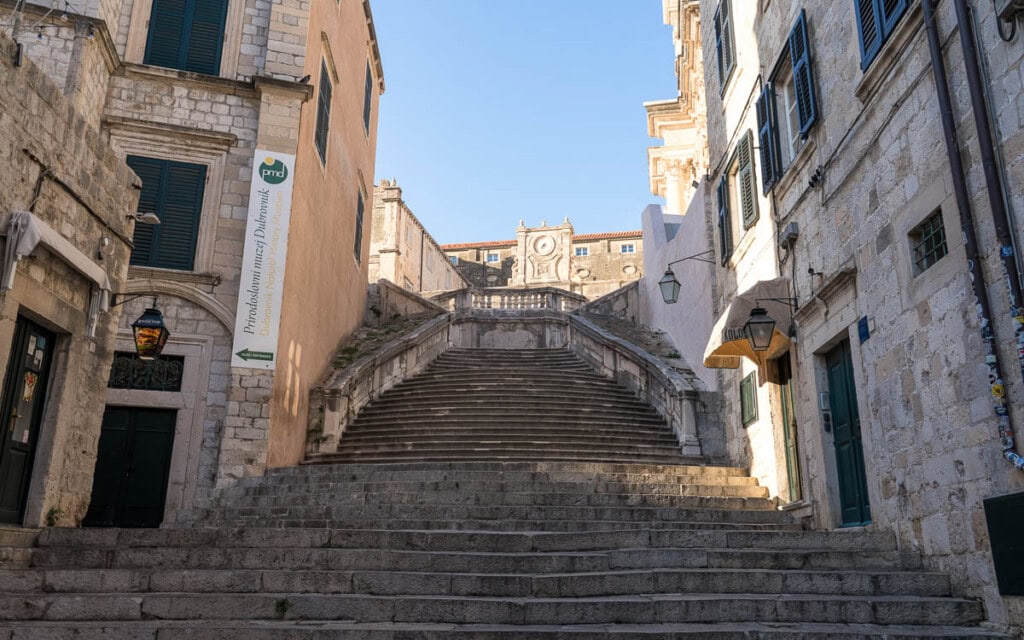
The Jesuit Stairs are a grand Baroque staircase that connects Gundulić Square to the Church of St. Ignatius in Old Town Dubrovnik, Croatia. The Church of St. Ignatius, at the top of the stairs, is an old church that once belonged to Collegium Ragusinum, a Jesuit college in Dubrovnik. The stairs are considered one of the city's most notable examples of Baroque architecture.
Small Onofrio Fountain

Located at the eastern end of Stradun, off Luža Square, is the historic Small Onofrio Fountain, an ornately decorated octagonal fountain. The small fountain, often overlooked by tourists, played an essential role in the history of Dubrovnik's water supply. Italian architect Onofrio della Cava designed and constructed the fountain between 1440 and 1442.
